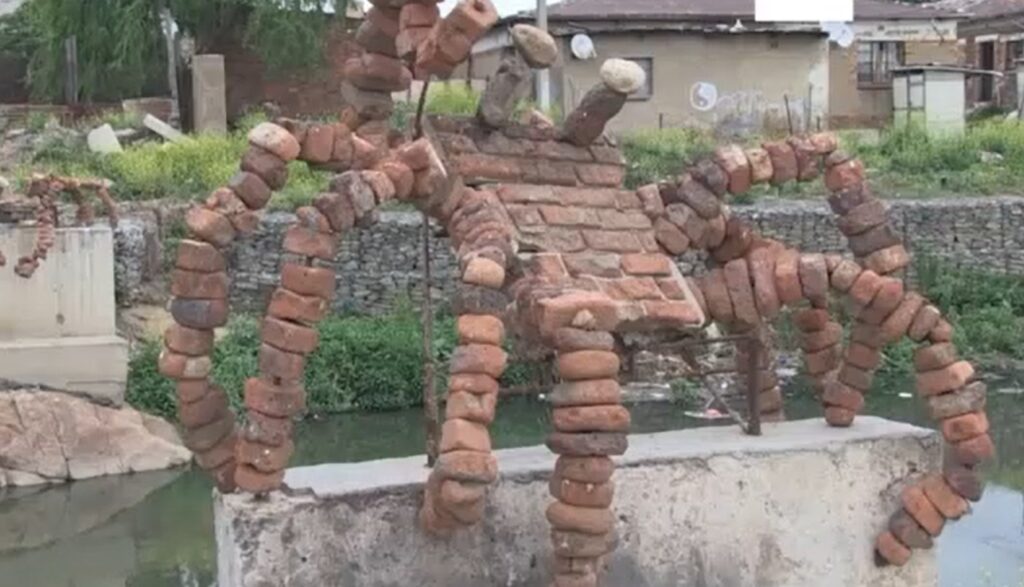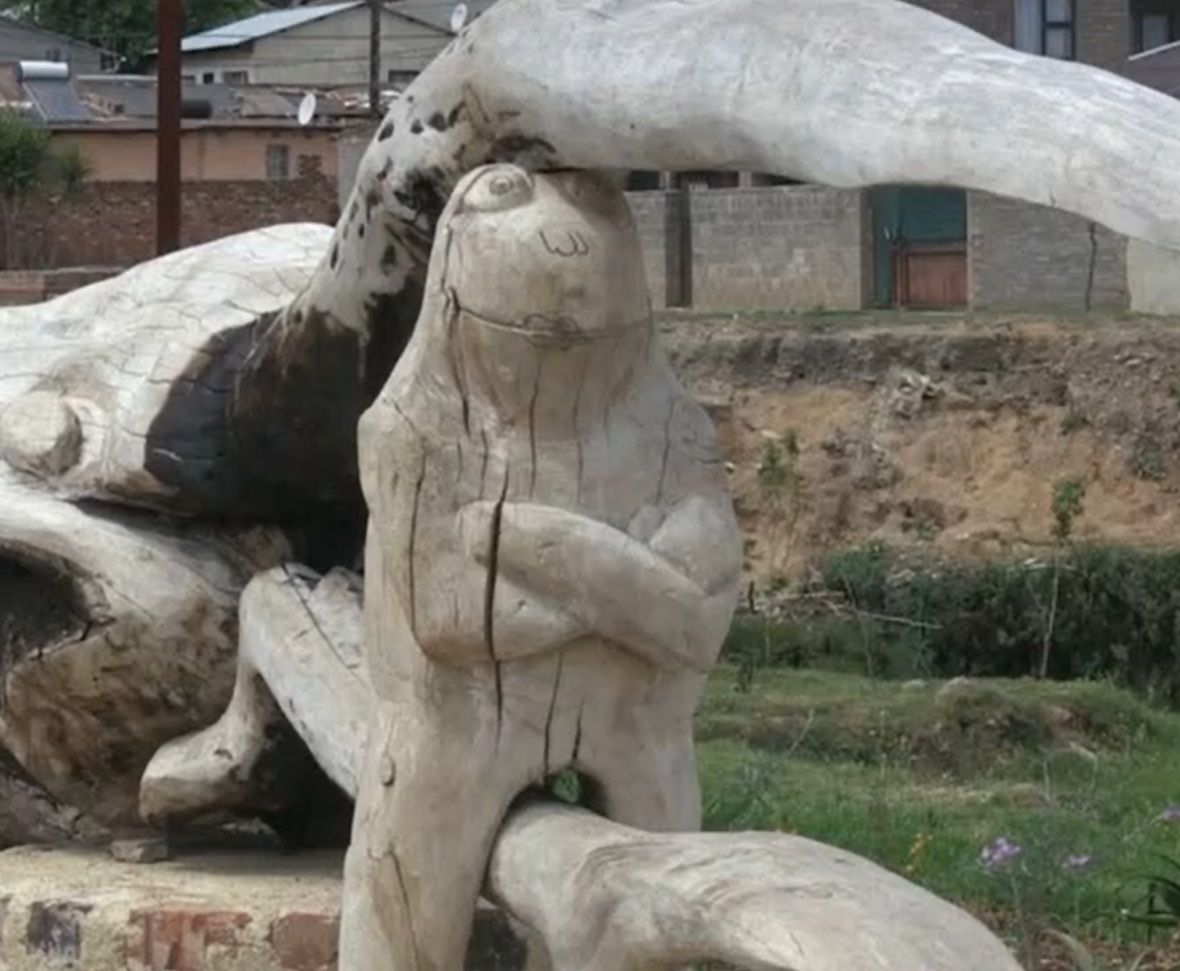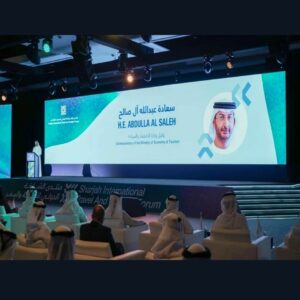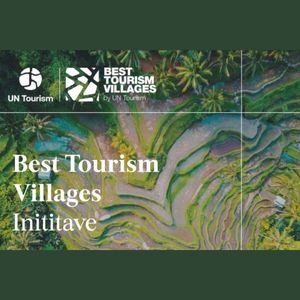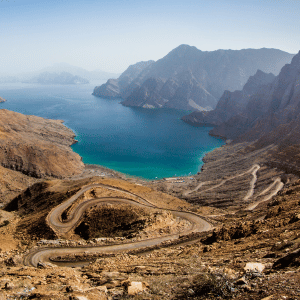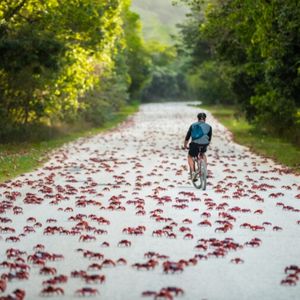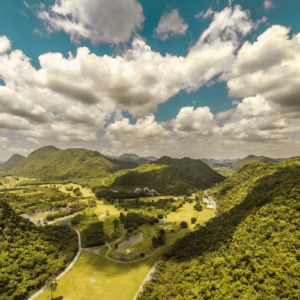In South Africa, waste recovered from a Johannesburg river is being transformed into works of art
Long neglected, the Jukskei River flows through the Alexandra neighborhood, a silent witness to pollution, illegal dumping, and the proliferation of invasive species. Today, it is at the heart of an innovative initiative that combines ecology, civic engagement, and artistic creation.
Along a three-kilometer stretch, thirteen artists from the Alexandra River Collective have repurposed tires, bricks, tree trunks, and rocks extracted from the river into sculptures called the Alexandra River Creature Series. These works transform an environmental problem into an artistic treasure and help raise awareness among residents and visitors about the importance of preserving waterways.
“While walking through Alexandra, you notice that many residents are renovating their homes. Rather than expanding, they build upwards and dispose of rubble by dumping it in the river or on its banks. “So I found the idea of working with this material fascinating: taking bricks eroded by water and transforming them into sculptures,” explains Sipho Gwala, a native of Alexandra and a member of the collective.
The Jukskei River is also suffering the effects of climate change: its eroded banks and floating tree trunks exacerbate the risk of flooding. To address this, SUNCASA (Scaling Urban Nature-Based Solutions for Climate Adaptation in Sub-Saharan Africa) supports the river’s restoration by combining nature-based solutions with citizen mobilization.
The Alexandra Water Warriors, a local association with more than 3,000 volunteers, have been regularly cleaning the river since 2019. “During this first rainy season, the situation was relatively calm. “The main challenge now remains the tree trunks, but we plan to reuse them or transform them into art installations,” says Paul Maluleke, co-founder of the association.
Phumzile Sizakele, a multidisciplinary artist and member of the Alexandra River Collective, transforms trunks extracted from the Jukskei River into sculptures representing local birds. These large pieces of wood, responsible for destructive floods, become vibrant works of art in her hands. For this passionate artist, it’s a cathartic experience: “By sculpting, I’ve realized that this activity has a therapeutic effect. After a stressful day, I come here with this piece of wood that I can shape, hammer, or damage to make something beautiful.”Long neglected, the Jukskei River flows through the Alexandra neighborhood, a silent witness to pollution, illegal dumping, and the proliferation of invasive species. Today, it is at the heart of an innovative initiative that combines ecology, civic engagement, and artistic creation.
Along a three-kilometer stretch, thirteen artists from the Alexandra River Collective have repurposed tires, bricks, tree trunks, and rocks extracted from the river into sculptures called the Alexandra River Creature Series. These works transform an environmental problem into an artistic treasure and help raise awareness among residents and visitors about the importance of preserving waterways.
“While walking through Alexandra, you notice that many residents are renovating their homes. Rather than expanding, they build upwards and dispose of rubble by dumping it in the river or on its banks. “So I found the idea of working with this material fascinating: taking bricks eroded by water and transforming them into sculptures,” explains Sipho Gwala, a native of Alexandra and a member of the collective.
The Jukskei River is also suffering the effects of climate change: its eroded banks and floating tree trunks exacerbate the risk of flooding. To address this, SUNCASA (Scaling Urban Nature-Based Solutions for Climate Adaptation in Sub-Saharan Africa) supports the river’s restoration by combining nature-based solutions with citizen mobilization.
The Alexandra Water Warriors, a local association with more than 3,000 volunteers, have been regularly cleaning the river since 2019. “During this first rainy season, the situation was relatively calm. “The main challenge now remains the tree trunks, but we plan to reuse them or transform them into art installations,” says Paul Maluleke, co-founder of the association.
Phumzile Sizakele, a multidisciplinary artist and member of the Alexandra River Collective, transforms trunks extracted from the Jukskei River into sculptures representing local birds. These large pieces of wood, responsible for destructive floods, become vibrant works of art in her hands. For this passionate artist, it’s a cathartic experience: “By sculpting, I’ve realized that this activity has a therapeutic effect. After a stressful day, I come here with this piece of wood that I can shape, hammer, or damage to make something beautiful.”
